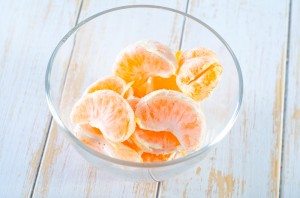Introduction
“Healthy Foods” is about both what we eat and how we eat. It is also about how we talk with our office staffs and our patients about healthy foods choices. This all can mean a great deal for the health of our community and our natural environment when our choices include selecting organic and locally produced foods, emphasizing non-meat meals, recycling, minimizing waste, and avoiding the use of plastics and Styrofoam.
We know how important it is for our patients to “eat right”. We want them to choose foods that are fresh, rich in vitamins, low in fat, and of reasonably sized portions. We want them to consider the balance of nutrients. And yet so often the foods we eat in our offices, and the ways that we eat, are far from healthy.
Let’s consider the “what” of eating first. The organic food movement that began in the United States nearly a century ago is now mainstream. Organically-produced foods are grown and raised by farmers using standards of practice that include little or no use of chemical pesticides, using only natural fertilizers, and careful stewardship of the land to allow for the sustainability of the soil and water conditions. Although it has been difficult for researchers to demonstrate a clear longevity benefit for populations eating organic foods, many studies have shown that organic foods contain higher levels of nutrients such as antioxidants, flavinoids, and beneficial trace elements; plus lower levels of toxic chemicals, pesticides, mycotoxins and heavy metals. Just about everyone agrees that organic tastes better, making us more willing to choose fruits, grains and vegetables as our principal foods.
Eating “local” means to choose foods that are produced nearby, preferably from within 100 miles of where we live. Eating “local”– or becoming a “localvore” — means that the foods are more likely to have been kept in the soil or on the tree to the peak of perfection so as to have the maximum possible healthy content. It means the foods can be fresher, less likely to have spoiled during transportation. In general, choosing locally-produced foods means less energy used for storage, refrigeration, packaging and transportation. Finally, eating locally is a tool for encouraging your local economy, local jobs, and the local landscape. One way to ensure that you will have lovely farms and trees around your town is for you, your neighbors, and your patients to support your local farmers.
We can encourage our co-workers in the office to select a balance of foods with healthy content, reasonable quantities, minimal fat content, organically produced and locally sourced.
The “how” of eating in the doctor office might be even more important than “what” we eat. To begin, meals in the office can be structured in a healthy manner. Whether a doctor, file clerk, cleaning person, clerk, nurse or manager, we need time away from our desk to relax, enjoy our office friendships, and to breathe a bit. Where we eat together should be clean, non-smelly, and free of chemicals from cleaning products, office machines, and fumes, including fumes from candles and Sterno products.
The “how” of eating includes avoiding wasteful practice such as disposable dishes, disposable containers, Styrofoam, aluminum products and plastics. Every lunchroom can have washable dishes, cups, and cutlery; environmentally-friendly dish soap; and a recycling bin. And we can encourage those vendors who bring us foods to choose foods for us according to simple standards of what is healthy for us and for our community. In this way, we also encourage the development of a a healthier, more resilient restaurant industry.
Adopt a policy for everyone in the office have no meat in their diets in the office or at home for at least one day each week. It might be “Meatless Wednesday”! The environment and most people benefit from avoiding meat products, and especially fatty meats and meats from 4-legged animals (beef, pork, lamb, mutton & goat). A terrific website on this is offered by the U.S. non-profit group, Physicians Against Red Meat: www.PhARM.org. Tell your families and patients.
Adopt a policy to have healthy, “green” foods in your office. Here is a list of practical, industry-standard guidelines that you can print and give to pharmaceutical representatives and other vendors who bring foods to the office (our thanks to chef Cathy Collins of Cafe Nola in Jacksonville, Florida, www.mocajacksonville.org, for helping with this):
Healthy Foods Policy
“Our doctor office wishes to promote a healthy workplace and to reduce our carbon footprint. Please consider these guidelines in choosing caterers and restaurants for food and beverages that you bring us.”
- Organic: Choose organic foods and beverages.
- Go local: Seek produce & specialty products that come from within 100 miles of our community.
- Be Sustainable: Offer fish and seafood products from sustainable fisheries and farms.
- Healthy fats: Use no trans fats in the preparation of foods for our office.
- Meatless: Offer a meatless lunch option, in addition to salads.
- Recyclable/Reusable: Use recyclable or reusable plates, cups and cutlery.
- Containers: Use recyclable or reusable containers and bags for deliveries.
- Whole foods: Promote healthier eating by using as many whole grains, beans, fresh, and unprocessed foods as possible.
- Healthy cooking: Avoid fried, oily, less healthy foods.
Plant a doctor office garden as a way to learn about healthy foods, healthy soils, and where our foods originate. Many hospitals now have vegetable and flower gardens as tools for teaching healthy eating, for developing teamwork and for encouraging physical activity among staff members and patients. A garden is a wonderful way to improve community air quality.
Offer a “green” cooking and shopping class in the doctor office, for staff, families and patients.
Food Boxes are weekly deliveries of fresh, local healthy foods. If you search on the internet, you will likely find several food box services in your area. One international company is at www.hellofresh.com. Tell your office or patients about food boxes. Create a handout for your waiting room to explain this option for receiving healthy food deliveries. People in your office may choose to order their own delivery or perhaps a few individuals might share a weekly food box delivery for $25-50 (US) per week. Interested? Look at our Blog here at My Green Doctor.
Print the free document provided by My Green Doctor titled, “Healthy Eating is Green, Too!” This was designed by Nicole O’Brien of the Orange County Health Department, Orlando, Florida, USA. Your office can print this as a one-page flyer to make available to patients in your waiting room, or you can print it in a larger size to hang in your waiting room or in examination rooms. Your patients and staff will learn about the health and environmental benefits of choosing foods produced from within 100 miles of your community.
Adopt a policy to improve the choices in your vending machines. This means looking at what is currently being offered and requiring the vending company to make changes so that what is available is entirely or mostly healthy foods and beverages, and that are also good for the environment. Use this guide from the National Alliance on Nutrition and Activity.
Tips for Success
Your Improvement Plan consists of the Action Steps that you choose to adopt for the office.
For each action step:
- sources (within 100 miles).
- Establish specific, measurable targets for what you want to accomplish such as, ìWe will have no fried foods in this office.î
- Agree on a leader for each Action Step.
- Agree on the responsibilities of each person in the office.
- If needed, obtain agreement or approval from the office manager or chief executive.
-
- Communicate with your office colleagues. Listen for ideas and try to elicit helpful criticisms.
- Educate your patients, families & community. Which ideas could be shared with your own families or with your patients? Part of the Green Team’s Improvement Plan must include an education plan. Your waiting room can become a site for education.
- Reassess the Plan after a reasonable period. Record your situation before you start taking action such as percentage of foods in your office that are from local sources.


